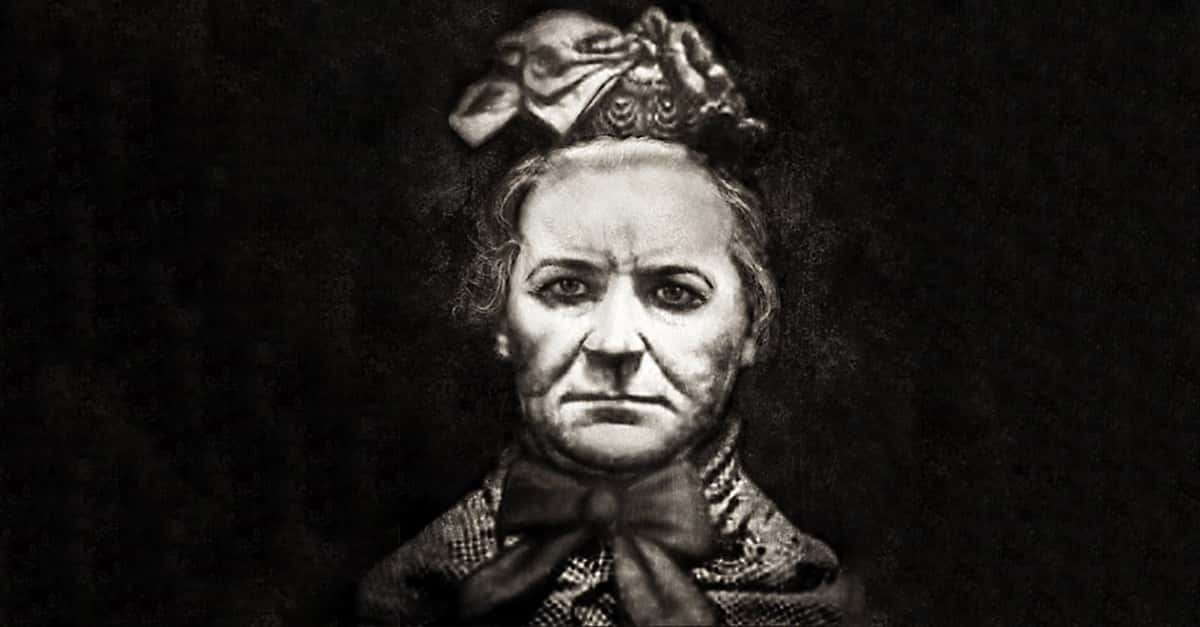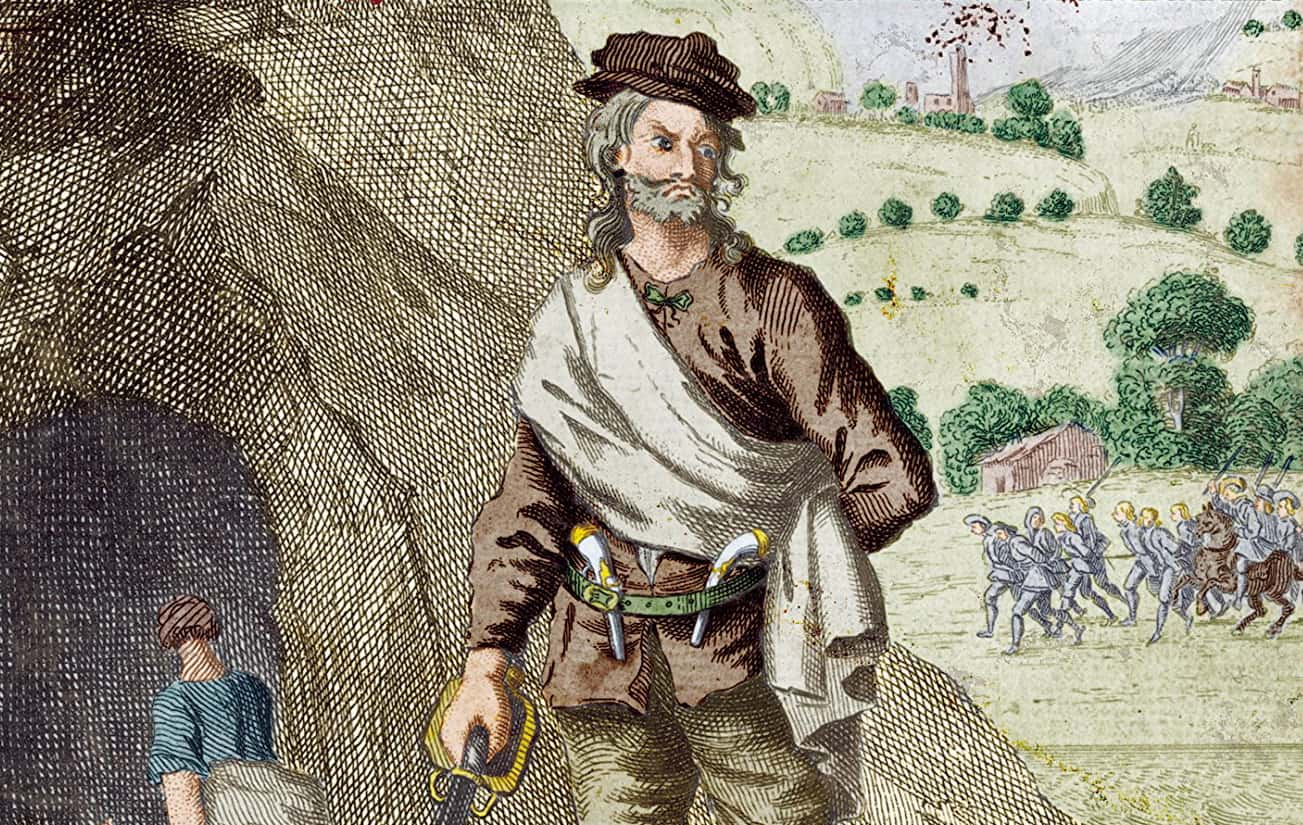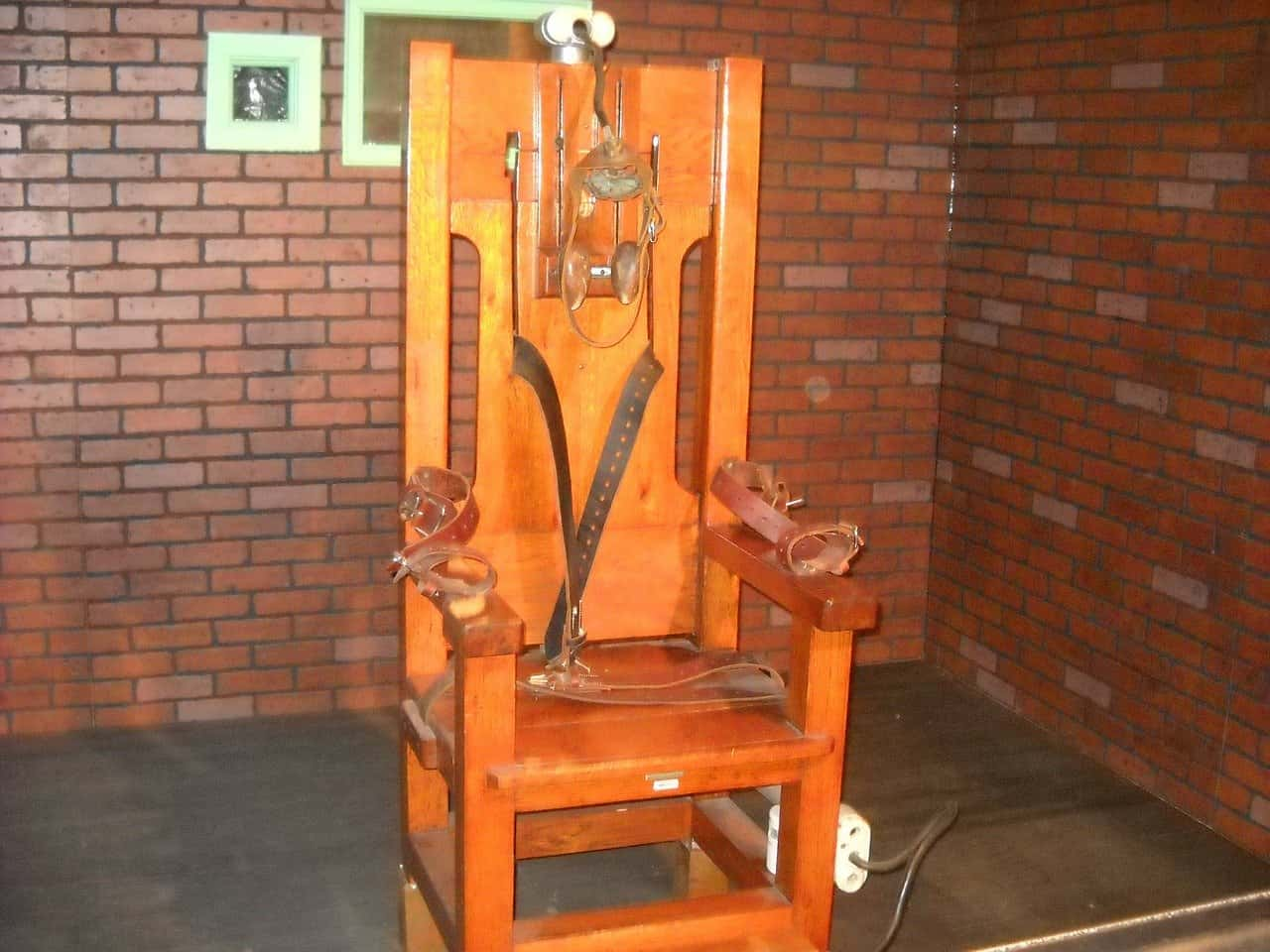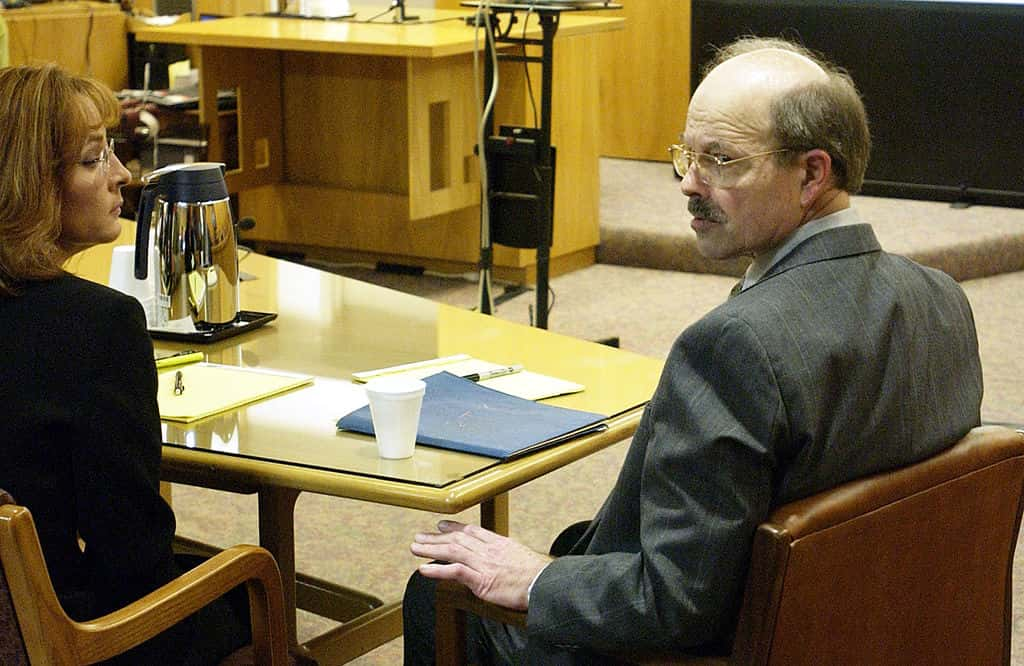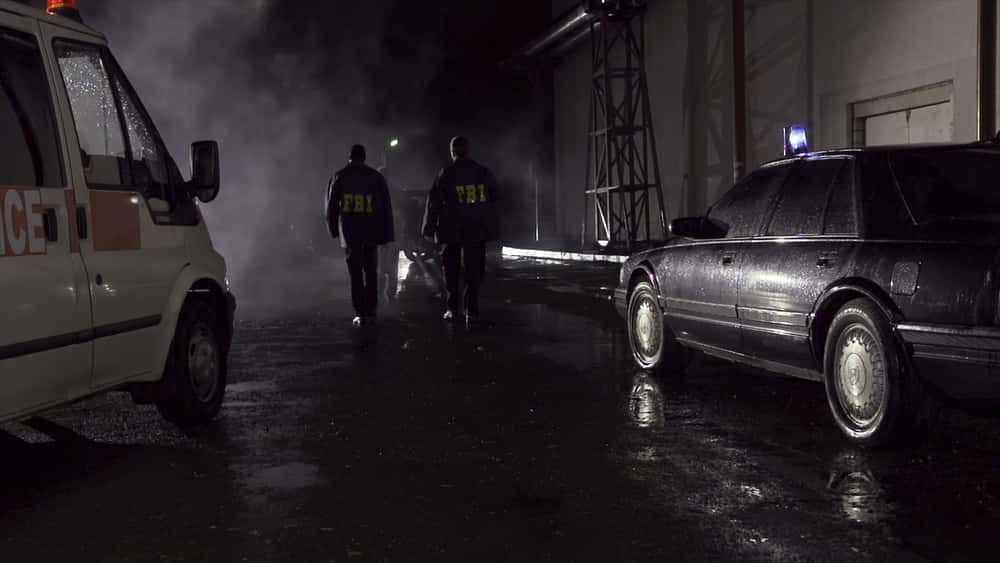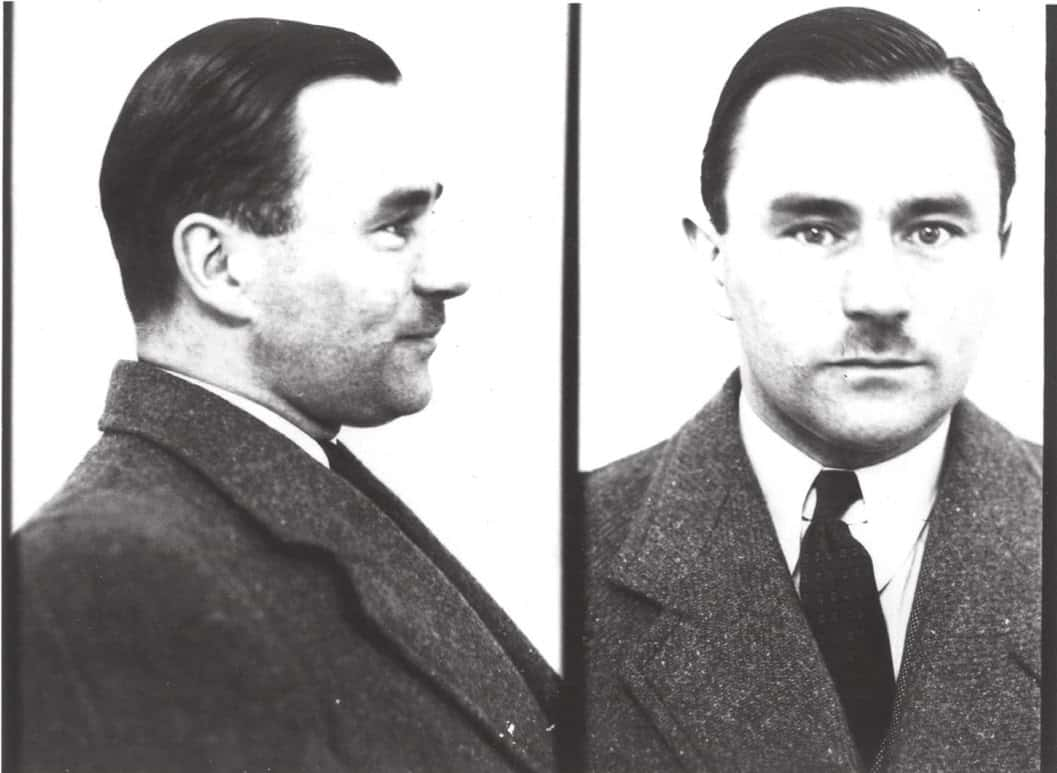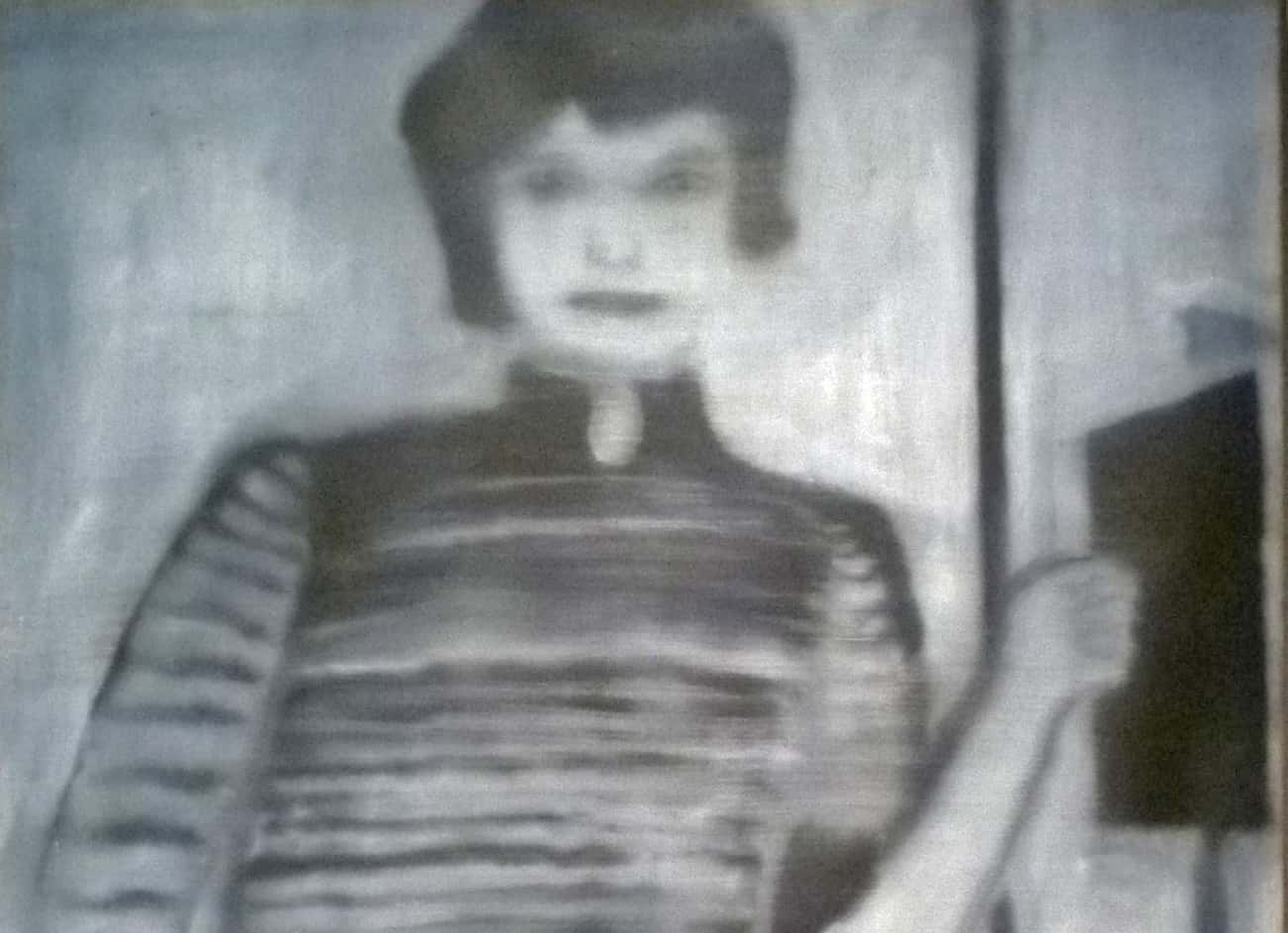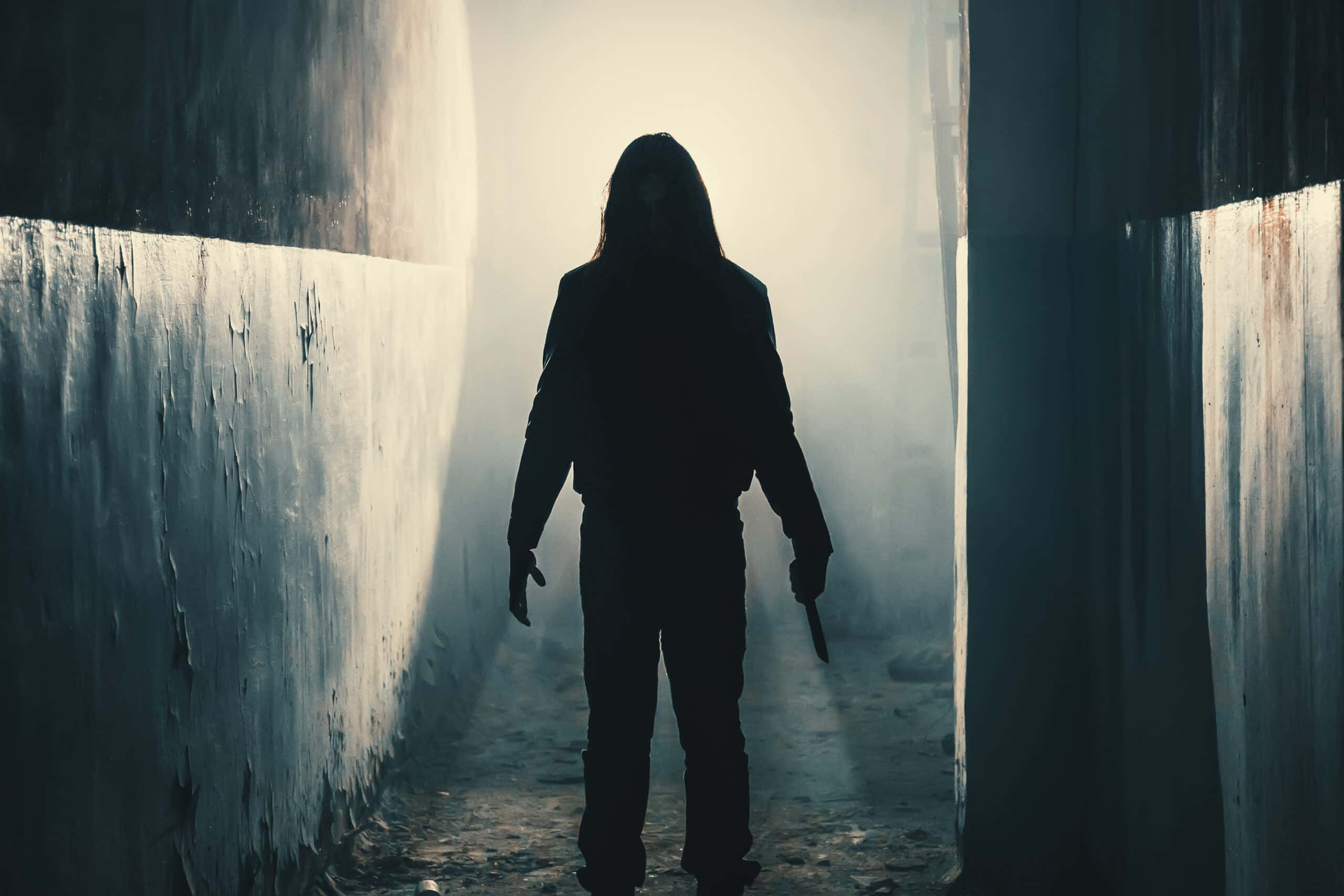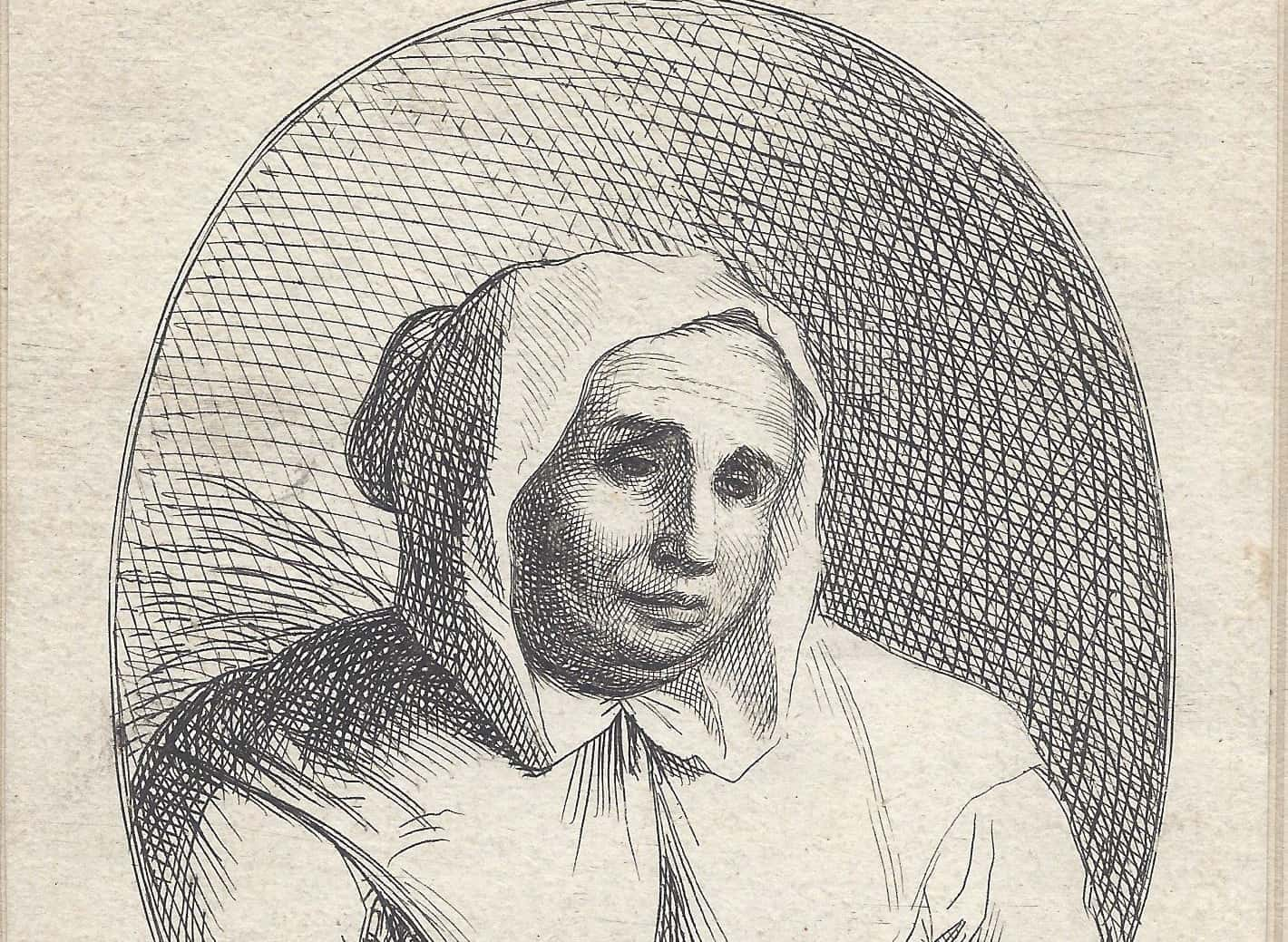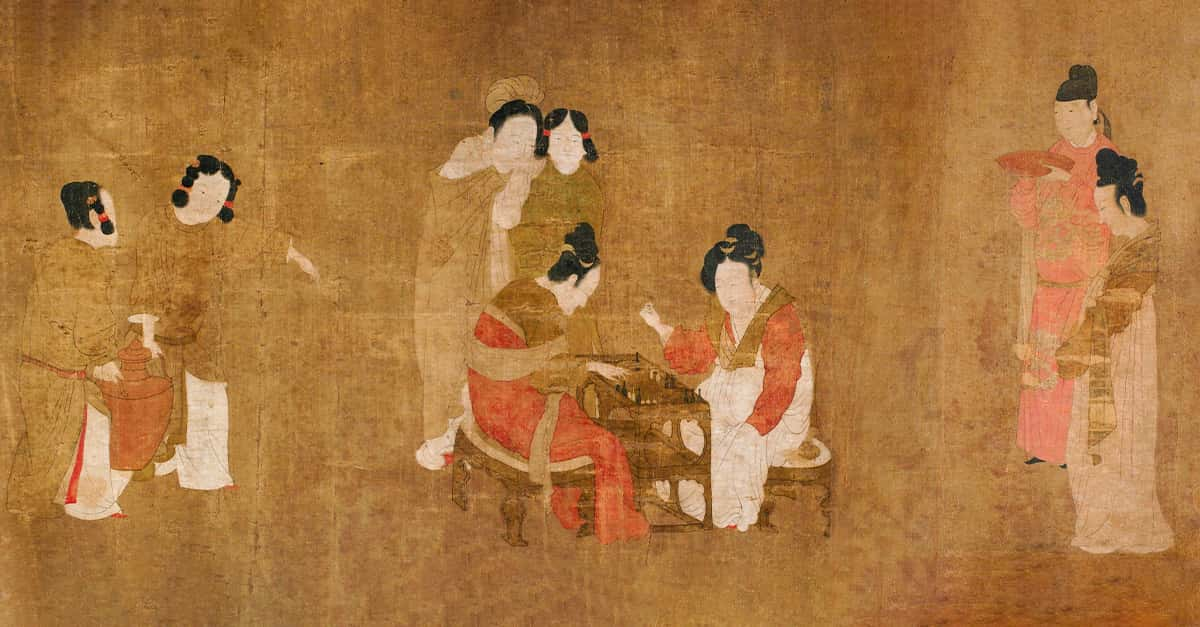Mass murderers. Serial stranglers. Cannibal killers. Even though their crimes make our stomachs turn, we somehow can’t help but feel fascinated by them. Leave your lights on for this one, because here are 42 disturbing facts about true crime throughout history.
True Crime Cases Facts
42. Read All About It
We may tend to think—somewhat paradoxically—of the most barbaric crimes as a modern phenomenon. That’s not true. In fact, one nineteenth century book, Lives of Twelve Bad Men: Original Studies of Eminent Scoundrels By Various Hands, details famous and ghastly murders which happened as early as 1536. Notable figures from the book include Matthew Hopkins, a self-styled witchfinder who hanged more than 300 women, and Lord Lovat, a kidnapper and rapist.
41. Big and Little
Micajah “Big” Harpe and Wiley “Little” Harpe were brothers (or cousins—or maybe both) who left Scotland for the United States in 1759. Starting with politically motivated raids on the homes of American patriots during the Revolutionary War, the devious duo soon escalated to cold-blooded thrill killing. The Harpe Brothers even had a macabre calling card: they would disembowel their victims and replace their organs with heavy stones.
40. American Pioneers
The Harpe Brothers killed at least 39 people in Tennessee, Kentucky, Illinois, and Ohio from 1797 to 1799. America's history of violence might have started here. The pair were the first serial killers in the United States —at least as far as anybody knows…
39. The Cannibal Clan
It's said that Sawney Bean lived in a dank, secret cave in western Scotland. He and his wife begat an incestuous clan who, for 25 years, ambushed travellers roaming Scotland's west coast. The Beans would bring their victims back to their cave to kill, dismember, and eat them. As the story went, the clan would pickle any leftovers that they couldn't eat, but occasionally nearby villagers would find body parts washed up on the shore. Whether or not the story of Sawney Bean is historical or mythical is debated today, so it is hard to say how "true" of a true crime story it is, but it was well known enough to serve as the inspiration for the 1977 horror flick The Hills Have Eyes.
38. A Penny for Your Thoughts
According to the Bureau of Justice Statistics, only 42% of violent crime is reported to authorities. Of that 42%, only 46% cases are cleared. Therefore, less than a quarter of violent crimes get solved.
37. Targets
Certain killers, like the Johannesburg Killer and Brazil’s Rainbow Maniac as killers who targeted and gruesomely murdered gay men. In fact, these two killers are still at large.
36. Poison Abound
In 1922, 997 New Yorkers died of poisoning. The likelihood that these were murders is extremely high. Because forensic testing for poison was not widely practiced in police investigations, and because coroners could easily be bribed, a person might commit dozens of poisonings completely undetected.
35. Mike the Durable
Michael Malloy was an alcoholic ex-fireman. Like a lot of people in the 1930s, he was down on his luck. So were five of his buddies. They all took out separate life insurance policies on Malloy and plotted to kill him. They tried poisoning him, drowning him, freezing him, even running him over with a taxi, but nothing worked. By this point, Malloy had become a celebrity among police and paramedics for his ability to cheat death, so when the “murder trust” finally succeeded in gassing him with carbon monoxide, police were swift to act. “Mike the Durable” became a Bronx legend, and his buddies were sent to the electric chair.
34. Role Reversal
Imagine a serial killer’s victim. Did you picture a woman? Movies tend to cast women as the victims, and certainly some of the more lurid crimes tend to involve female victims, but it might surprise you to learn 53.8% of serial killing victims are men.

History's most fascinating stories and darkest secrets, delivered to your inbox daily.
33. Choose Your Friends Wisely
Only 15% of serial killers’ victims are chosen at random; that means 85% of victims were specifically chosen. Add that to the fact that nearly 50% of serial killers list pleasure as their primary motive in murder, and it makes for some very creepy math.
32. Murder After the Fact
In 1966, Charles Whitman committed one of the most shocking crimes in American history when he opened fire from the clocktower of the University of Texas in Austin. Whitman killed 14 people before he was gunned down by police. But more than three decades later, a 15th person was added to Whitman's list of victims: David Gunby was shot in the kidney and spent the rest of his life on dialysis, before succumbing to his injuries in 2001. Though Whitman died that day in 1966, he was found responsible for Gunby's murder 35 years after the fact.
31. A Growing Problem
Mass killings are on the rise. The five deadliest mass shootings in US history have all occurred in the last ten years.
30. The Golden Age of Serial Killing
The good news is: serial killings are in decline. In the 70s and 80s, nearly 400 people were confirmed murdered by serial killers. Compare that to just 61 from 2000 to 2010.
29. The Year of the Damned
The BTK Killer. The Green River Killer. The Sunday Morning Slasher. The Casanova Killer. What do they all have in common? Besides being brutal murderers with ominous pseudonyms, they all began killing in 1974. John Wayne Gacy murdered his second victim that year as well.
28. Sticks and Stones
When we give nicknames to serial killers, we may accidentally elevate them to mythic status, turning them into romantic figures. This is probably not the case with Robert Nixon, who received the moniker “The Brick Moron.”
27. Native Son
There was nothing funny about the crimes Nixon was accused of—beating five women to death with a brick. So why did Nixon get such a lousy nickname? Racism, probably. Nixon was black, and throughout his 1939 trial, he was compared to a wild animal with sub-normal intelligence in court and the media. The blatant racism of the trial—and the questionable validity of Nixon’s confession—prompted Richard Wright to write his classic novel Native Son about how a society of hatred and oppression inevitably produce a man capable of terrible crimes.
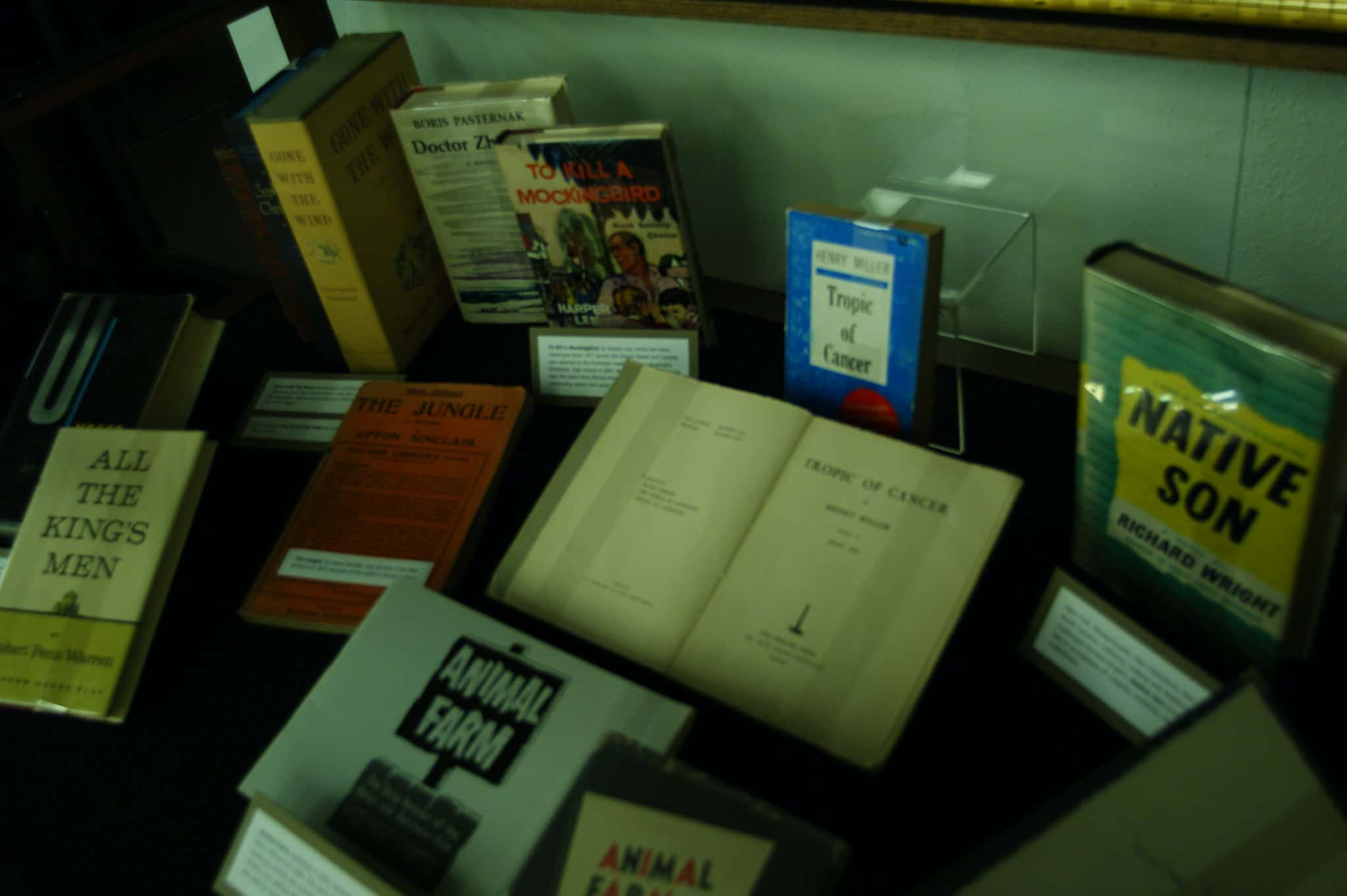 Flickr, McFarlin Special Collections
Flickr, McFarlin Special Collections
26. Keep an Eye on Him
Charles Albright got a lot of media attention for the murder of Shirley Williams, who was found dead with both of her eyes missing. Albright was also charged—though never convicted—with two other murders where the victims also had their eyes removed. His disturbing post-murder ritual earned him the nickname “The Eyeball Killer,” but despite a distinctive ritual and a snappy nickname, Albright is not classified as a serial killer.
25. The Criteria
The FBI considers a serial killer any person guilty of two or more separate murders. So, while it seems likely Albright had other victims, since he was only convicted of one murder, he just misses the cut. One can’t help but feel if he hadn’t been caught when he was, he would almost certainly be considered a serial killer today.
24. Convoy of Killers
The highway truck stop—a place where two strangers might briefly interact and then never see, or even think about, each other again. This makes them the perfect lurking place for serial killers. The FBI has noticed an irregular number of killings happening along highways and has launched a special initiative to fight back: The Highway Serial Killings Initiative.
23. Success?
The Highway Serial Killings Initiative has paid off. Recent arrests have closed more than 30 murders related to highway killings. A good start, but there are still 500 to go.
22. Orange Socks
One example of a highway killing is that of Orange Socks, an unknown young woman found at the side of Interstate 35, named for her distinctive footwear. Serial killer Henry Lee Lucas confessed to the killing, but his confession is in doubt given contradictions in his statement and the fact that he would have been in Florida at the time.
21. Life in Prison
Despite the eleven other murders Lucas was found guilty of—and the 3,000 he claimed—only the Orange Socks murder carried the death penalty. Lucas later recanted the confession, and had his sentence commuted to life in prison.
20. They Let Him Walk
In 1978, Lawrence Singleton raped a fifteen-year-old hitchhiker named Mary Vincent. When he was done, he cut off her forearms with a hatchet and threw her off a cliff. Miraculously, Vincent managed to crawl up the cliff and attract the attention of a passing car. She was taken immediately taken to a hospital and managed to survive, though with horrific wounds both within and without. Despite her testimony, Singleton only served eight years in prison for the crime. He was arrested again in 1997, this time for murder, and was sentenced to death, in large part because this time, he was caught in Florida rather than in California.
19. A Dead Language
John George Haigh—the Acid Bath Murderer—earned his nickname for his practice of dissolving the bodies of his victims in acid. Haigh’s shoddy Latin had led him to believe the legal phrase corpus delicti (which translates literally to "body of the crime") meant that, without a body, he couldn’t be charged with the murders. In reality, it simply means that a crime must be proved to have occurred before someone can be convicted. Haigh was hanged in 1949.
18. Back to the Drawing Board
When Richard Ramirez’s crimes were first reported in the media, he was referred to as “The Valley Intruder.” As Ramirez’s reign of terror continued, most people agreed “Valley Intruder” was a bit understated. From then on, Ramirez was known as “The Night Stalker.”
17. The Volunteer
Karla Homolka and Paul Bernardo were both convicted of the rape and murder of three young women, including Homolka’s own sister. While Bernardo remains in prison, Homolka was released after just ten years, in large part because she agreed to a plea deal before the extent of her participation in the murders was known. She currently lives under an assumed name in Quebec, where she volunteers at a local elementary school.
16. A Chilling Fact
The FBI keeps a list of serial killings by state. While the list of serial killers per capita consists mostly of states in the south-west, it’s cold, snowy Alaska that takes top spot. While there have been only 51 serial killings in the history of the state, that’s nearly sixteen people per million.
15. The Butcher Baker
More than half of Alaska’s serial murders took place in the 1980s and 90s. The rest belong mostly to Robert Hansen, a baker who tortured and murdered at least seventeen women from 1971 until his arrest in 1983. Hansen might have had as many as 30 victims.
14. The Doctors Are In
Two murderers share the nickname “Doctor Death:” Maxim Petrov and Harold Shipman. Petrov, a Russian physician, broke into his patient’s homes and anesthetized them for the purpose of robbing them, and soon escalated to delivering lethal injections. Shipman, a British general practitioner, injected as many as 260 of his patients with a lethal chemical cocktail. Shipman forged wills from many of his victims, leaving himself large sums of money. Somehow this went undetected for decades. As far as confirmed victims go, Shipman is reckoned to be the most prolific serial killer in history.
13. Mad Scientist
Serhiy Tkach used his experience as a Soviet soldier and police forensics expert to avoid Ukrainian authorities for decades while he murdered more than 100 people. Tkach’s expertise allowed him to frame others for his crimes; he even attended the funerals of some of his victims.
12. Mind the Traffic
Joel Rifkin murdered seventeen women in just two years, making him the most prolific serial killer in New York history. He might never have been caught if not for a routine traffic stop. Police tried to pull him over for expired tags, but Rifkin fled. After crashing his car, Rifkin admitted to having a dismembered body in his trunk.
11. Card-Carrying Creep
Overwhelming DNA evidence helped convict Arohn Kee of the rape and murder of three women in 90s. While in prison, Kee made a cottage industry of describing his violent sexual attacks on 5x7 cards and selling them on the internet. It seems like some people have few boundaries they won't cross to fulfil their true crime fetish.
10. The Gallows
From his teenage years onward, Wayne Allan Dodd was in constant trouble for sexual harassment and the molestation of children, and his behavior only escalated over the course of his life. In 1993, Dodd was convicted of the rape and murder of three young boys. Convinced he could not be rehabilitated, Dodd requested the death penalty. Given his choice of execution methods, Dodd chose hanging, as it was how his final victim died. Dodd was the first person to be legally executed by hanging in the US since 1965.
9. Wolf in Sheep’s Clothing
Between 2005 and 2009, the bodies of eight women have been found in a swamp in Jefferson Davis Parish, Louisiana. Their killer has never been found, but accusations of misconduct directed at the police department have left some locals with an uneasy feeling: could the killer be one of their own police?
 Flickr,
Flickr,
8. The Las Vegas Massacre
The largest mass-murder in US history happened on October 1, 2018 during a concert in Las Vegas. Gunman Stephen Paddock killed 58 people and injured another 851 more before turning the gun on himself. From the first shot to the last, Paddock’s massacre took less than ten minutes.
7. The Little Girl Strangler
Mary Bell spent her formative years in a dysfunctional and abusive home in 1960s England. Her difficult childhood would eventually manifest itself in horrific fashion: Mary was just ten years old when she strangled four-year-old Martin Brown. A few weeks later, she killed again, strangling and mutilating a three-year-old named Brian Howe. She was so little her hands left no bruises on the throat of Brown. She was caught and spent her teenage years in prison before being released in 1980 at the age of 23. She has been living under various pseudonyms ever since.
6. In the Nick of Time
For years, Toronto police ignored concerns that a serial killer was targeting the city’s gay community. In 2018, however, they caught Bruce McArthur red-handed with a man restrained to his bed. Police soon uncovered six more bodies buried on land associated with the Toronto killer.
5. He’d Been There All Along
Most serial killers begin killing in their twenties. Given his age, one expert suggests, the McArthur has probably been murdering people since in the mid-1970s…it’s just no one had noticed.
4. The Baby Farm
Amelia Dyer was a 19th century "baby farmer" in England. She ran a home for unmarried pregnant women where she would care for them and their children, helping the infants find a home, all for a fee—or so she said. When a bargeman found a tiny corpse floating in the Thames, it was wrapped in a paper with Dyer's address on it. At her house, they found another 50 corpses. That was just the tip of the iceberg, however. Dyer had been committing her crimes for nearly 30 years, and it's believed she killed more than 300 children, making her one of the most prolific serial killers in history. The indifference English society held for unmarried, single mothers at the time ensured that Dyer could get away with her atrocities for so long.
3. La Voisin
17th century French sorceress Catherine Monvoisin wore many hats. She eked out a living as a fortune teller, abortionist, and general magician-for-hire. Many "sorceresses" at the time also sold poisons—a natural extension of the love potions and truth serums they produced. The only difference was, the poisons worked. “La Voisin,” as Monvoisin became known, was allegedly responsible for 2,500 deaths before the law caught up to her. La Voisin ended up embroiled in the Affair of Poisons, a scandal in the court of Louis XIV where members of the aristocracy were implicated in poisonous plots. The police knew that fortune tellers dealt in poisons, and they arrested La Voisin. She was convicted of witchcraft and burned at the stake.
2. Sleep Tight…
The FBI believes there are as many as 25 active serial killers in America right now.
1. And Pleasant Dreams
Researchers at the Murder Accountability Project disagree—according to their study, the number might be as high as 2,000.
Sources: 1, 2, 3, 4, 5, 6, 7, 8, 9, 10, 11, 12, 13, 14, 15, 16, 17, 18, 19, 20, 21, 22, 23, 24, 25, 26, 27, 28, 29, 30, 31, 32, 33

